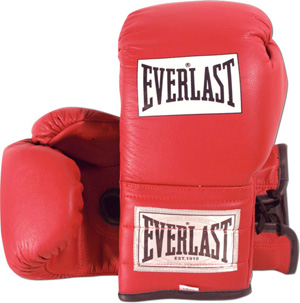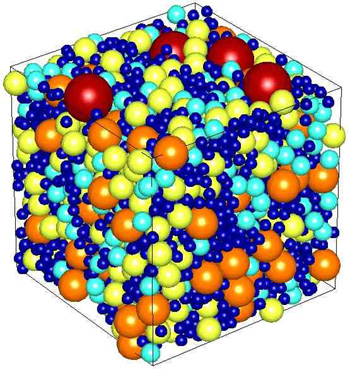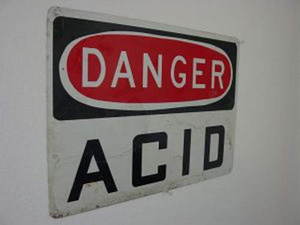How to Fight “Bad” Hormones with “Good” Hormones
Posted by Joel Marion
The below article is being reprinted with permission of John Romaniello and FinalPhaseFatLoss.com
Beings that John is such a good friend of mine, he’ll be stopping in again throughout the day today to answer questions you might have about the article and the awesome content he’s been providing at FinalPhaseFatLoss.com for the last week or so.
Fighting Hormones with Hormones
By John Romaniello
As I’ve covered previously, when you are breaking through a fat loss plateau or trying to get to the Final Phase of leanness, things get a bit murkier than they do with traditional fat loss.
Rather than dieting excessively in order to create a Calorie deficit, we seek to enter into energy debt by way of intelligently designed training protocols. In addition, keeping energy intake high ensures that leptin levels don’t drop and throw another hormonal monkey wrench into the machinery.
Because, as we know from yesterday’s article, when you’re getting very lean or you’ve hit a plateau, fat loss is not just about Calories in vs Calories out–it’s about your hormonal environment and the way that affects fat storage, and thereby fat loss.
When you’ve lost the first 20 or 30 or whatever pounds, you’ve lost the “easy” fat. What you’ll notice about your body is that you’re now holding fat specifically in your trouble areas; and those trouble areas are determined by your specific hormonal environment.
If you’ve been following along, by now you know that it’s not just about energy debt or cardio or to a lesser extent diet (although all of those things do factor in quite a bit, obviously).
When your fat loss has stalled and you’re trying to break through that wall, or when you’re trying to rid yourself of those last stubborn 5-10 pounds, it’s a hormonal battle.
And there is only one way to win: fight hormones with hormones.
 We’ve established that there are three specific hormones that cause the three most common types of regional fat storage.
We’ve established that there are three specific hormones that cause the three most common types of regional fat storage.
As a quick recap:
1. Estrogen – the female sex hormone responsible for lower body fat storage patterns.
2. Insulin – Or rather, insulin resistance; this nasty little dude heavily influences fat storage in the love handle and lower back area.
3. Cortisol – the appropriately dubbed stress hormone is part of the reason you’ve got more flab than ab.
Those are your enemies.
Now, I want to talk to you about how you can actually increase the production of other hormones that offset the above “bad” hormones–through the manipulation of training methods.
In this corner…
Estrogen vs. Testosterone
Now that we’ve established (again, with apologies to the ladies) that estrogen is the main reason lower body fat storage occurs, we need to know how to work around that.
Well, how else would you combat estrogen but with testosterone? In all honesty, when if comes to fat loss and muscle gain, testosterone good, estrogen bad.
It’s for that reason that professional athletes, bodybuilders and the juicers down at the Jersey Shore use illicit steroids that are derivatives of testosterone.
Of course, that’s not an option for us–and certainly not desirable.
Instead, we are going to increase testosterone levels naturally, through training. Not only will this increase the net fat-burning effect of all exercises, but more appropriate to our purposes here, it will also facilitate in getting rid of lower body fat.
I should mention something here to alleviate any concerns: it is NOT possible to produce a detrimental amount of testosterone through training. So ladies, you don’t have to worry about any masculinizing effects.
Instead, training produces what we would term a ‘high’ amount of testosterone from a physiological perspective, relative to what your body normally produces. For the guys, this means that such training will help you put on a bit more muscle–just not steroid muscle.
Got it?
Okay, moving on.
At this point, I know you’re thinking, ‘all right Roman, get to the point, what do I do?”
Great question. And the answer is Density Training.
 Training in a way that seeks to increase training density is one of the best ways to spur your body to produce and release more testosterone, which will (obviously) help you lose that estrogen related fat storage.
Training in a way that seeks to increase training density is one of the best ways to spur your body to produce and release more testosterone, which will (obviously) help you lose that estrogen related fat storage.
Training density can be defined as the amount of work you do in a given amount of time during a training session. If you want to increase density, you can do more work (sets, reps, or both) in the same amount of time, or do the same amount of work and decrease the time in which you do it.
However, I’ve come up with a method of density training that is specific to radical fat loss, and this means that not only will you produce the testosterone necessary to mitigate your regional fat issue, but you’ll also lose more fat on the whole.
Pretty cool, eh?
So here is how we do it. As an example, let’s pick 3 exercises: the overhead press, the dumbbell row, and the squat.
Setting these up in a circuit fashion, you perform them one after another with little rest in between.
Sounds like just about any circuit training protocol, right?
WRONG.
Instead of having a set number of reps, we’re going to be forming each of these exercises for TIME–you simply have to do as many as you can in a given time period.
To make it easy, let’s say you did each of the above exercises for 30 seconds. In performing such a circuit, your results might look like this:
Overhead Press: 25 pound dumbbells for 20 reps
DB Row: 40 pound dumbbells for 18 reps
Squat: 100 pound barbell for 22 reps
Not too shabby. Now, HERE is where it gets crazy.
We’re going to take advantage of some cool things that happen in the body; triggers that happen which will make you more efficient and more capable.
To do that, we’re going to INCREASE the weight by 10-20% and try to do MORE reps.
Does that seem impossible? It isn’t. Due to neuromuscular junction and neural activation, in almost ALL cases, you’ll be able to do just that.
Your second attempt at that circuit might look like this:
Overhead Press: 30 pound dumbbells for 23 reps
DB Row: 50 pound dumbbells for 20 reps
Squat: 120 pound barbell for 25 reps
I know you’re having trouble believing that outcome is even possible, much less common, but I implore you–try it for yourself!
Density training is fun, challenge-based, burns a heck of a lot of fat, and–most importantly–is one of the best training modalities around for increasing testosterone production and release.
Training for increased workout density will help you shed stubborn lower body fat, and as we’ve mentioned more fat on the whole.
Insulin Resistance vs. IGF-1
As I mentioned in the video above, insulin resistance is combatted very nicely by a hormones called IGF-1, or Insulin-like Growth Factor one.
Producing extra IGF-1 via training will help you (and me!) improve insulin sensitivity and begin to rid ourselves of love handle and lower back fat.
We established yesterday that insulin resistance is very common, particular in people who were previously overweight; so if you have lost some fat and you’re now struggling to lose a bit more, and that fat happens to be in your love handles, I’m willing to bet you’re suffering from some degree of insulin resistance.
In order to get rid of that fat, we have to do fat burning workouts (obviously) and increase insulin sensitivity to the greatest degree that we can through the training effect. To that end, we need to employ what I call Dynamic Training.
 Dynamic training is pretty much the over-arching concept of how I design fat loss training programs–it consists of using fast-paced movements to teach the body how to move more efficiently. Combination movements, like the squat-to-press I demonstrated in the above video are also brought to bare.
Dynamic training is pretty much the over-arching concept of how I design fat loss training programs–it consists of using fast-paced movements to teach the body how to move more efficiently. Combination movements, like the squat-to-press I demonstrated in the above video are also brought to bare.
Because this style of training is extremely expensive in terms of energy (Calorie) demand, by and large dynamic training is excellent as a general fat loss modality.
Perhaps more importantly, however, is the fact that utilizing these types exercises and setting them up in a non-competing circuit fashion under the dynamic training umbrella is an incredible way to produce IGF-1–and that is one of the most effective methods to mitigate insulin sensitivity.
Take it from someone who knows; nothing is better for combating love handle fat than increasing insulin sensitivity–and one of the most effective ways to do that is to produce more IGF-1 through dynamic training.
Cortisol vs. Growth Hormone
And now we come to our final bout of the evening–the main event, as it were.
We have touched on cortisol a bit, so I won’t rehash that too much. Suffice it to say that the higher your cortisol levels are, the more fat you’re going to be storing on your belly. Given that fact, it stands to reason that if you store fat primarily in the abdominal region, you’re a victim of high cortisol.
Never fear, though: Growth Hormone is here.
Also known as the “fountain of youth”, growth hormone is the single most effective compound your body can produce to affect both fat loss and muscle gain. The more you produce, the faster you’ll lose fat and build muscle. It’s just as simple as that.
Now, in addition to that awesome little fact, growth hormone is going to whoop cortisol’s ass and help you burn belly fat.
Also, you’ve probably heard that one of the ways to reduce your cortisol levels is to get more sleep. That’s something you hear on nearly all the medical TV shows. What you don’t hear is the reason.
You see, sleeping is one of the main ways by which your body produces growth hormone. Or, saying it another way, while you’re asleep is your body’s primary opportunity to produce growth hormone.
And, as I stated previously, growth hormone is one of the main hormones that reduces the effects of cortisol.
Sleep more and you’ll produce more GH. Produce more GH and you’ll have less cortisol. Therefore, sleeping more results in lower cortisol levels. Got it?
Of course, I’m not suggesting you can just sleep your way past a fat loss plateau; although getting more sleep does help. I’m merely illustrating the relationship between cortisol and growth hormone.
Which leads us to the production of growth hormone as it relates to training.
While nearly all forms of exercise produce both growth hormone and cortisol, some types are better than others. Cortisol, as I mentioned in the previous article, is produced heavily in long duration cardio sessions–so let’s not do that.
Instead, we’re going to utilize a style of training that produces more growth hormone.
To do that, we’re going to employ a training method known as Lactic Acid Training.
 In order to get to the growth hormone, you must first produce lactic acid.
In order to get to the growth hormone, you must first produce lactic acid.
Lactic acid, by way of a definition, is a byproduct of the chemical reactions that take place during exercise. This substance is wildly irritating to the nerves, and your body responds.
Think of lactic acid as sort of a type of oil igniting fires as it flows through you–your body will call the fire department to put those fires out. And your body will do that by dousing them with soothing, cooling growth hormone.
Okay, maybe I’m being a little simplistic with my metaphor, but it gives you a general idea.
In any event, we must structure training to produce the most lactic acid possible. And, because lactic acid is primarily produce in the concentric (positive) phase of anaerobic exercise, we extend that period, and decrease the eccentric period.
What that means is that we lift the weight very very slowly, and lower it very very quickly so that we can have a fast turn around.
As an example, if you’re doing a squat, you’ll descend to the bottom the squat very quickly (drop down fast, but still controlling the weight somewhat) and then lift the weight sloooowly, oh so sloooowly–over a period of 4-6 seconds.
This will create tremendous amounts of lactic acid, which will intern send GH production into overdrive.
I must mention that training in this way necessitates the use of lighter weights than you normally would on any given exercise. Therefore, if you’re interested in lactic acid training, I suggest you reduce the weight you’d use on any exercise by about 30% in order to be both safe and effective.
With traditional training methods, you’d lift the weight pretty quickly and lower it slowly. Here, we’re doing the opposite, in order to produce the most lactic acid possible, which will then lead to a corresponding increase in the production of growth hormone.
This will result in not only reducing cortisol, but also reducing cortisol related fat storage in your belly.
On top of it all, it’s great for fat loss in general!
Closing Thoughts
Although the battle against hormone-related fat storage can be a tough one, it’s certainly easier when you yourself have hormones on your side–tougher, stronger, better looking hormones!
Say goodbye to cortisol and belly fat with increase growth hormone production via lactic acid training.
Make lower-body fat (and man boobs) along with estrogen issues history through density training.
And combat the ol’ love handles and insulin resistance with dynamic training and IGF-1 production.
With Final Phase Fat Loss, stubborn becomes easy. Slow becomes fast. And it’s all because every single workout within the Final Phase system has been specifically created to combat the hormonal reasons you’re NOT losing fat.
——————————————————————————————————
Again, John & I are here to answer your questions, so go ahead and ask away by posting a question or comment below!
Secondly, John is giving away FIVE FREE copies of the entire Final Phase Fat Loss System right now at his blog — Click HERE to Win a FREE Copy of Final Phase Fat Loss ($369 Value – ends today)


 We’ve established that there are three specific hormones that cause the three most common types of regional fat storage.
We’ve established that there are three specific hormones that cause the three most common types of regional fat storage. Training in a way that seeks to increase training density is one of the best ways to spur your body to produce and release more testosterone, which will (obviously) help you lose that estrogen related fat storage.
Training in a way that seeks to increase training density is one of the best ways to spur your body to produce and release more testosterone, which will (obviously) help you lose that estrogen related fat storage. Dynamic training is pretty much the over-arching concept of how I design fat loss training programs–it consists of using fast-paced movements to teach the body how to move more efficiently. Combination movements, like the squat-to-press I demonstrated in the above video are also brought to bare.
Dynamic training is pretty much the over-arching concept of how I design fat loss training programs–it consists of using fast-paced movements to teach the body how to move more efficiently. Combination movements, like the squat-to-press I demonstrated in the above video are also brought to bare. In order to get to the growth hormone, you must first produce lactic acid.
In order to get to the growth hormone, you must first produce lactic acid.









 Hey, it’s Joel! So you want to know a little more about me, huh? Well, I’d be happy to oblige :-)
I guess it all started back in 2001 (my freshman year of college) when I was just a “skinny fat” 19-year old kid. At the time, I was spending close to 2 hours a day in the gym (now my workouts last about 30 minutes), and despite my efforts, you’d probably never guess I worked out a day in my life by looking at me...
Hey, it’s Joel! So you want to know a little more about me, huh? Well, I’d be happy to oblige :-)
I guess it all started back in 2001 (my freshman year of college) when I was just a “skinny fat” 19-year old kid. At the time, I was spending close to 2 hours a day in the gym (now my workouts last about 30 minutes), and despite my efforts, you’d probably never guess I worked out a day in my life by looking at me...